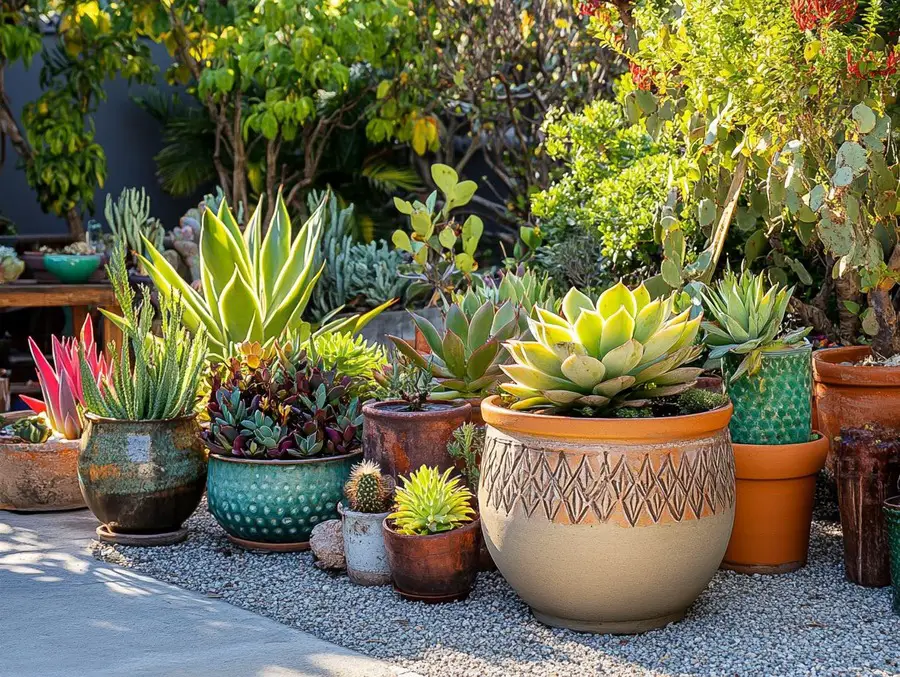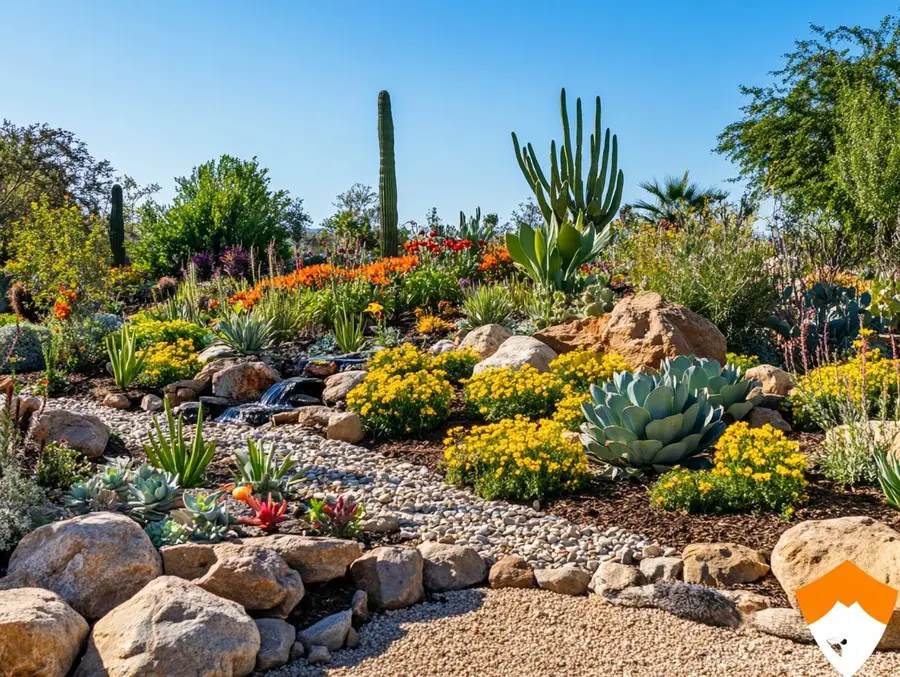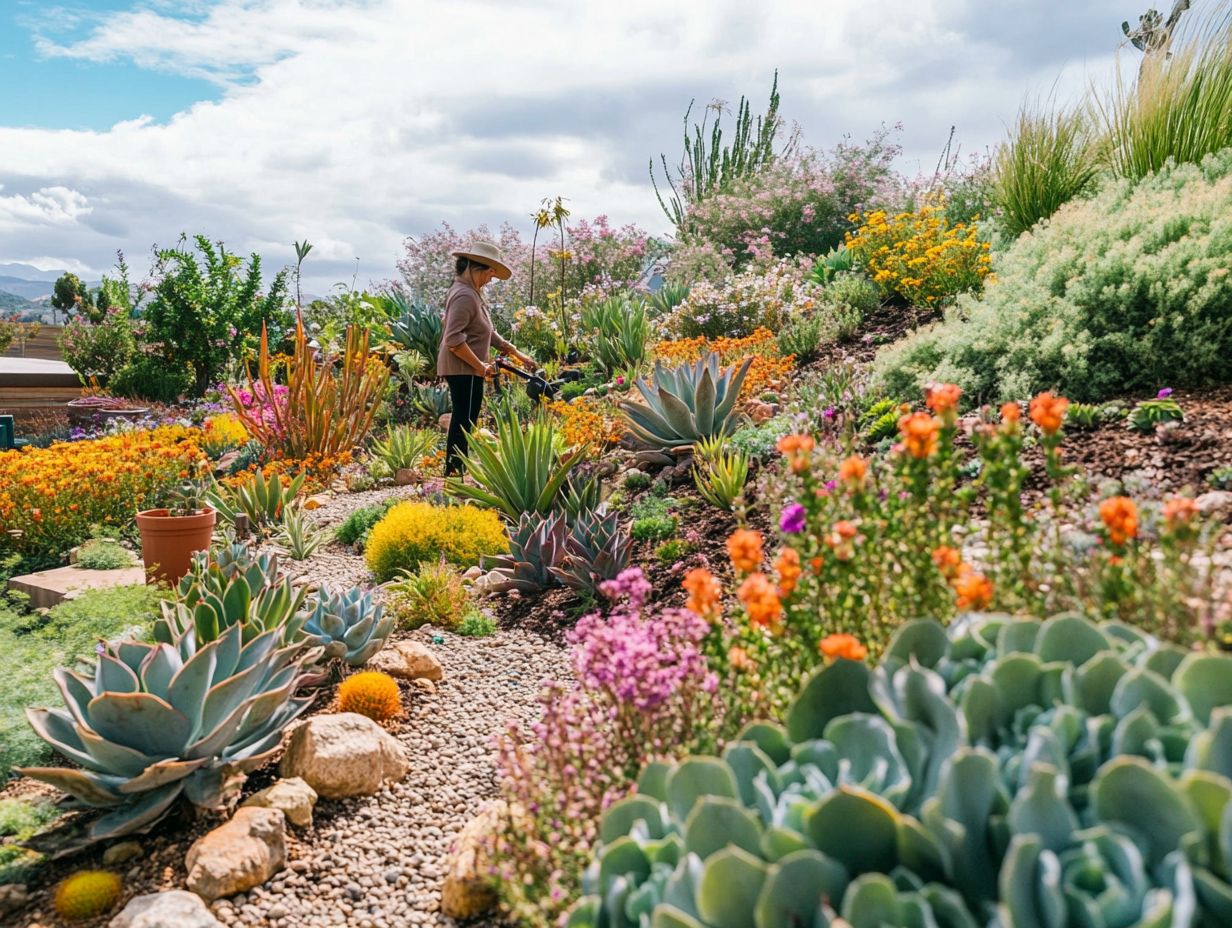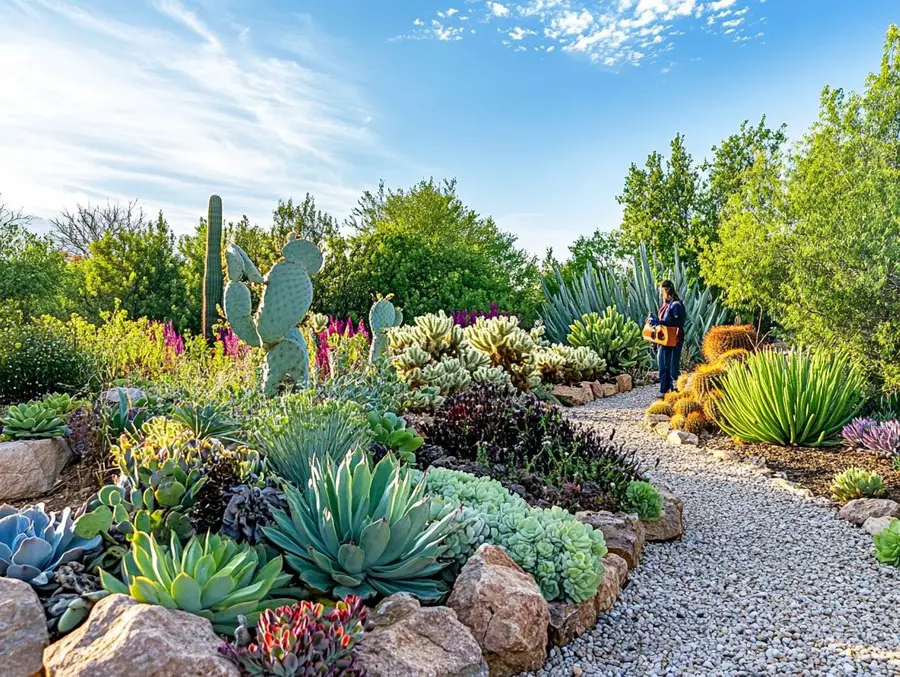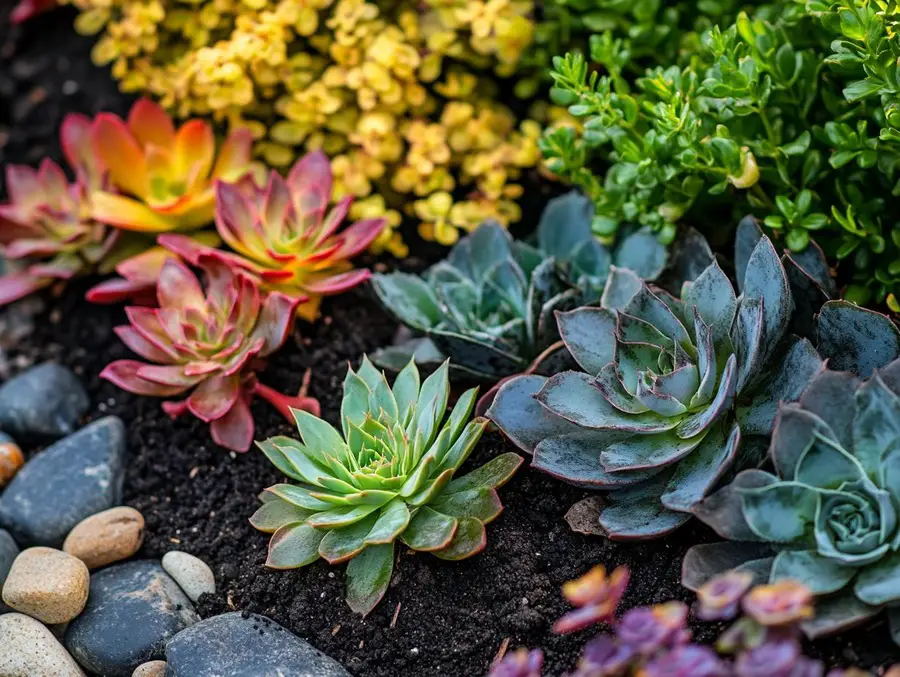We use affiliate links. If you purchase something using one of these links, we may receive compensation or commission.
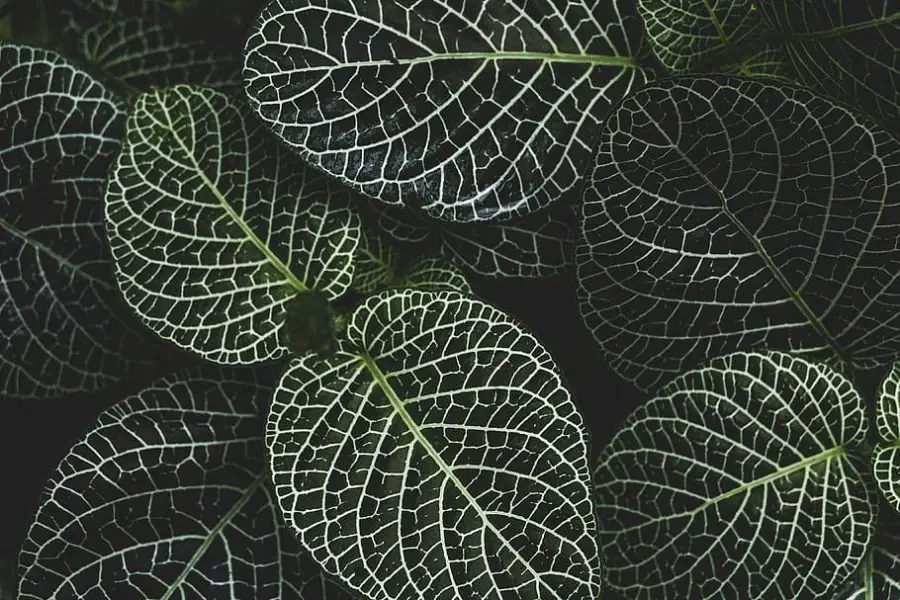
Master Fittonia indoor care with our easy guide. Create a serene green oasis in your home with our expert tips for vibrant, thriving Nerve Plants.
Fittonia Indoor Care Key Takeaways:
- Fittonia Indoor Care is about balancing light, water, and humidity.
- Keep the soil moist, provide bright, indirect sunlight, and maintain high humidity to enjoy these vibrant leafy beauties at their best.
- With proper care, your Fittonia will be an eye-catching addition to your indoor space.
Dive into the lush world of Fittonia care indoors! These striking plants bring a lively burst of the tropics right to your living room.
With their signature vein-traced leaves, Fittonias are a dream for enthusiasts seeking a green thumb triumph.
Let’s unfold the secrets to nurturing these vibrant houseplants to perfection.
Fittonia Indoor Care:
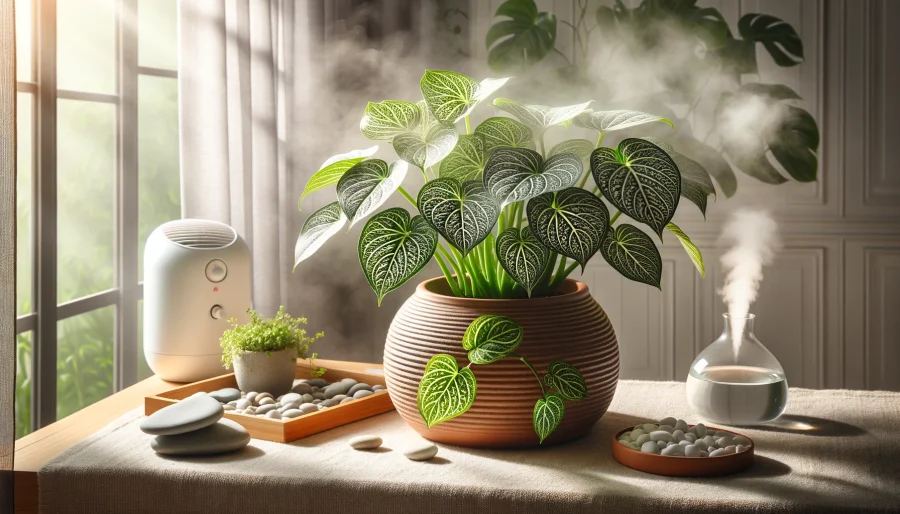
A Beginner’s Guide to Nerve Plant Bliss
Hey there, plant enthusiasts! Welcome to the world of Fittonia, a.k.a. the Nerve Plant.
If you’re looking to add a splash of color and texture to your indoor jungle, you’re in the right place.
Fittonia is not just any ordinary houseplant; it’s a vibrant, low-maintenance beauty that’s perfect for beginners and seasoned plant parents alike.
Why Choose Fittonia?
So, why the fuss about Fittonia? First off, those eye-catching leaves!
With their unique vein patterns and lush greenery, they’re like nature’s own artwork.
Plus, Fittonia is super adaptable, making it a great fit for various spots around your home.
Fittonia (or nerve plant or mosaic plant) is a genus of evergreen perennial flowering plants in the acanthus (‘bear’s britches’) family, Acanthaceae. The genus is native to tropical and subtropical forested areas in northern and western South America, mainly Perú. Wikipedia
Embarking on Your Fittonia Journey
Whether you’re a plant pro or just starting your green journey, Fittonia is a must-have for a touch of indoor elegance.
Ready to dive into the world of Fittonia care?
Keep reading, and we’ll show you how to keep your Nerve Plant happy, healthy, and thriving.
Let’s get started!
Light Requirements:
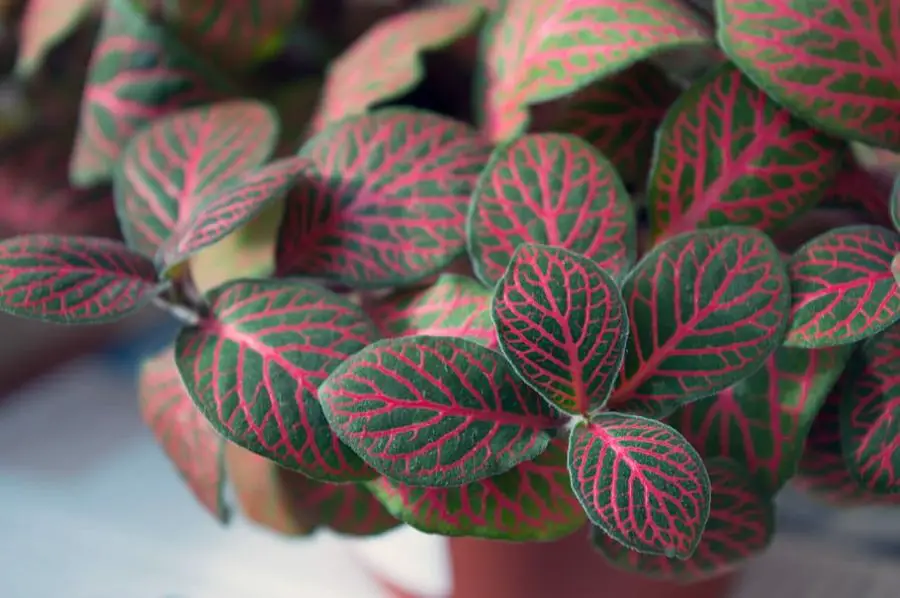
Finding the Sweet Spot for Your Fittonia
When it comes to keeping your Fittonia vibrant, light plays a starring role.
These plants are like the Goldilocks of the indoor garden – they want their light just right.
Not too bright, not too dim, but perfectly balanced.
The Ideal Lighting Setup
Nerve Plants thrive in bright, indirect light. A spot near a window with sheer curtains is ideal, as it diffuses the sunlight and prevents those pretty leaves from getting scorched.
If your room doesn’t get much natural light, no worries! Fittonia can also do well under artificial grow lights, making it a versatile choice for any space.
Avoiding the Extremes
Direct sunlight? That’s a no-go. It can cause the leaves to fade and lose their vibrant patterns.
On the flip side, too little light can make your Fittonia leggy and dull.
It’s all about finding that happy medium where your plant can bask in the glow without getting a sunburn.
Adapting to Your Space
Got a north-facing window? Perfect! East-facing? Even better, especially for those morning rays.
South or west-facing windows can work too, just keep your Fittonia a bit further back or use curtains to soften the light.
Remember, a happy Fittonia is one that’s getting just the right amount of light love.
Watering: Quenching Your Fittonia’s Thirst Without Drowning It
Watering your Fittonia can feel like a delicate dance. Too much, and you risk soggy roots; too little, and those leaves might start throwing a tantrum.
But don’t sweat it! With a few simple tips, you’ll have the watering rhythm down in no time.
The Perfect Moisture Balance
Aim to keep the soil consistently moist but not waterlogged.
Stick your finger about an inch into the soil – if it feels dry, it’s time for a drink. If it’s still damp, hold off for a bit.
Overwatering is a common mistake, so when in doubt, less is more.
The Right Way to Water
When it’s time to water, go for a gentle, even approach. Make sure the water reaches all parts of the soil, not just one spot.
And always use a pot with drainage holes to let any excess water escape. Nobody likes wet feet, and your Fittonia is no exception!
Consider Using Self Watering Planters
Take the guesswork out of watering with self-watering planters—a true game-changer for Fittonia indoor care.
These innovative pots come equipped with a reservoir at the bottom that gradually disperses moisture to the soil, offering a steady supply of water directly to the roots.
It’s an effortless way to maintain optimal moisture levels, ensuring your Fittonia gets just the right amount of water without the risk of over or under-watering.
Plus, they’re a perfect time-saver for the busy plant lover!
Adapting to Seasons and Conditions
Your Fittonia’s thirst can change with the seasons. In the warmer months, it might need more frequent watering, while in the cooler months, you can dial it back.
Keep an eye on your plant and the environment, and adjust your watering schedule accordingly.
With a little observation and care, you’ll keep your Fittonia hydrated and happy.
Humidity and Temperature:
Creating a Cozy Climate for Your Fittonia
Fittonia plants are like the tropical vacationers of the indoor garden world – they love a warm, humid environment.
Creating the right climate is key to keeping your Fittonia looking lush and lively.
Cranking Up the Humidity
In their natural habitat, Fittonias bask in the humid air of tropical rainforests.
To mimic this at home, aim for a humidity level of 60-70%. You can boost humidity by misting your plant regularly, placing it on a pebble tray with water, or using a humidifier.
Your Fittonia will thank you with vibrant, perky leaves.
Keeping It Warm
When it comes to temperature, Fittonia is a bit of a Goldilocks – not too hot, not too cold.
Keep your plant in a spot where the temperature stays between 60-80°F (16-27°C).
Avoid drafts, sudden temperature changes, or placing it near heating or cooling vents, as these can stress your plant.
A Comfortable Fittonia Is a Happy Fittonia
By maintaining the right humidity and temperature, you’ll create a cozy environment where your Fittonia can thrive.
Think of it as setting up a little tropical retreat right in your living room.
Your plant will reward you with its stunning foliage and a happy, healthy vibe.
Soil and Fertilization: Laying the Foundation for a Nerve Plant Flourishing
When it comes to Fittonia, the right soil is like a comfy bed – it provides support, nourishment, and just the right amount of moisture.
And when you pair it with the right fertilizer, you’ve got a recipe for a happy, thriving plant.
Choosing the Right Soil Mix
Fittonia loves well-draining soil that retains moisture without getting soggy.
A mix of coco coir and perlite is a fantastic choice. Coco coir, made from coconut husks, holds moisture and nutrients well, while perlite improves drainage and aeration.
This dynamic duo creates the perfect environment for your Fittonia’s roots to spread and thrive.
Fertilizing for Success
To keep your Nerve Plant’s growth lush and vibrant, feed it with a balanced liquid fertilizer every two weeks during the growing season (spring and summer).
In the fall and winter, you can reduce feeding to once a month or less.
Remember, a little goes a long way – over-fertilizing can do more harm than good.
A Strong Foundation for Growth
With the right soil mix and a steady fertilization schedule, you’re setting your Fittonia up for success.
It’s all about providing a stable, nourishing foundation that supports your plant’s growth and keeps it looking its best.
So, go ahead and give your Fittonia the soil and nutrients it deserves, and watch it flourish!
Pruning and Maintenance: Keeping Your Fittonia in Tip-Top Shape
A well-groomed Fittonia is a sight to behold, and with a little pruning and regular maintenance, you can keep your plant looking its best.
Think of it as giving your Fittonia a little spa treatment – it’s all about keeping it healthy, happy, and stylish.
Pruning for Perfection
Fittonia can get a bit leggy if left to its own devices. To encourage a bushier, fuller look, give it a trim now and then.
Snip off any long stems or yellowing leaves to promote new growth.
Use clean, sharp scissors or pruning shears to make clean cuts, and don’t be afraid to shape your plant to your liking.
Keeping It Clean
Regularly cleaning your Fittonia’s leaves not only keeps it looking fresh but also helps it absorb more light.
Gently wipe the leaves with a damp cloth to remove dust and any pesky pests that might be lurking.
This simple step can make a big difference in your plant’s health and appearance.
A Regular Check-Up
Just like any other living thing, your Fittonia needs regular check-ups.
Keep an eye out for signs of pests, disease, or other issues.
Catching problems early can save you a lot of trouble down the line and keep your Fittonia thriving for years to come.
A Happy, Healthy Fittonia
With regular pruning, cleaning, and monitoring, you’ll keep your Fittonia looking fabulous.
It’s all about giving it a little love and attention, and in return, it’ll brighten up your space with its stunning foliage and vibrant vibes.
Common Issues: Troubleshooting Your Fittonia’s Problems
Even with the best care, Fittonia can sometimes run into issues. But don’t worry!
Most problems can be solved with a little detective work and some timely intervention.
Here’s how to tackle some common Nerve Plant troubles:
Yellowing Leaves
If your Fittonia’s leaves are turning yellow, it might be getting too much water or not enough.
Check the soil – if it’s soggy, let it dry out a bit before watering again.
If the soil is dry, give your plant a drink. Consistency is key!
Drooping Leaves
Drooping leaves often signal underwatering or low humidity.
Make sure you’re keeping the soil consistently moist and consider boosting the humidity around your plant.
A happy Fittonia is a well-hydrated one!
Brown, Crispy Leaves
Brown, crispy leaves can be a sign of too much direct sunlight or low humidity.
Move your Fittonia to a spot with bright, indirect light and increase the humidity with a pebble tray or humidifier.
Pests
Keep an eye out for common pests like spider mites, mealybugs, and aphids.
If you spot any, isolate your Fittonia and treat it with insecticidal soap or neem oil.
Prevention Is Better Than Cure
The best way to deal with issues is to prevent them from happening in the first place.
Regularly check your Fittonia for signs of trouble, and make sure you’re providing the right care in terms of light, water, humidity, and temperature.
With a little proactive care, you can keep your Nerve Plant healthy and happy.
Propagation: Growing New Fittonias from Your Existing Plant
Propagating your Fittonia is like creating mini-me’s of your beloved plant.
It’s a fun and rewarding way to expand your indoor garden. Here’s how to do it:
Stem Cuttings: The Easy Way to Multiply Your Fittonia
- Choose a Healthy Stem: Look for a stem with at least two to three leaves and a couple of nodes (the little bumps on the stem where leaves grow).
- Make the Cut: Using clean, sharp scissors, snip the stem just below a node.
- Prep Your Cutting: Remove the leaves from the bottom half of the stem to expose the nodes.
- Rooting Time: Place the cutting in a jar of water, ensuring the nodes are submerged. Keep it in a bright spot with indirect light and wait for roots to appear. This can take a few weeks, so be patient!
- Planting Time: Once the roots are a couple of inches long, you can plant your new Fittonia in a pot with well-draining soil.
Soil Propagation: Another Route to New Plants
You can also plant your stem cuttings directly into the soil.
Just make sure to keep the soil consistently moist and cover the pot with a plastic bag to create a mini greenhouse.
This helps maintain humidity, which is crucial for rooting.
The Joy of Propagation
Watching your cuttings grow roots and turn into new plants is incredibly satisfying.
Whether you’re looking to expand your collection or share the Fittonia love with friends, propagation is the way to go.
FAQs: Navigating the World of Fittonia Care
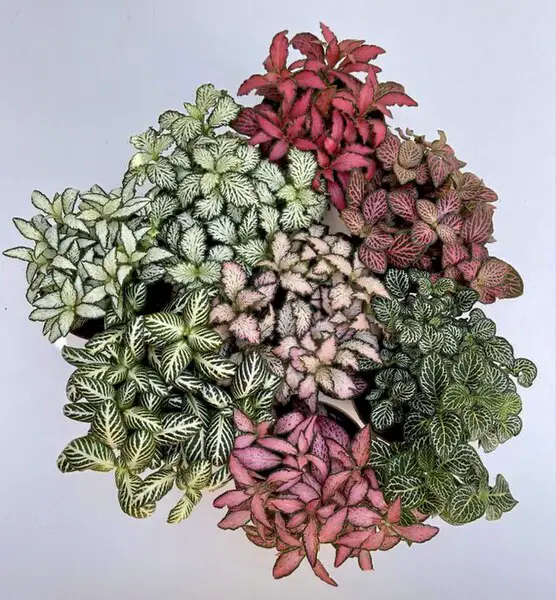
Embarking on the journey of Fittonia care can spark a ton of questions. No worries, though!
We’ve rounded up some of the most common queries to help you keep your Nerve Plant thriving.
Q. How much light does my Fittonia need?
A. Your Fittonia prefers bright, indirect light. Too much direct sunlight can burn the leaves, while too little light can cause the plant to lose its vibrant color. A spot near a window with a sheer curtain is ideal.
Q. How often should I water my Fittonia?
A. Keep the soil consistently moist but not soggy. Water thoroughly when the top 50% of the soil is dry. If your Fittonia dries out too much, the leaves may wilt, but they should perk up after a good watering.
Q. What’s the ideal temperature for my Fittonia?
A. Fittonia thrives in average room temperatures between 65-80°F. Avoid cold drafts and direct airflow from heaters during the winter months.
Q. How can I increase humidity for my Fittonia?
A. Fittonias love higher humidity levels. You can boost humidity by misting the plant regularly, placing a humidifier nearby, or using a pebble tray. Grouping several humidity loving plants together can also create a beneficial microclimate.
Q. Should I fertilize my Fittonia?
A. Yes, feed your Fittonia every month in spring and summer with a general houseplant fertilizer diluted to half the recommended strength. No fertilizer is needed during the fall and winter months.
Q. Can I propagate my Fittonia?
A. Absolutely! Fittonias can be propagated from stem cuttings. Simply take a cutting with a few leaves and nodes, place it in moist soil or water, and wait for roots to develop. Once rooted, you can pot it separately.
Q. Is my Fittonia toxic to pets?
A. Good news! Fittonias are non-toxic and pet-friendly, so they’re safe to have around your furry friends.
Conclusion: Embracing the Journey of Fittonia Indoor Care
Congratulations! You’re now equipped with the knowledge to keep your Fittonia thriving.
Remember, caring for a Fittonia is a journey, not a destination.
Each plant is unique, and you’ll learn more about its needs as you go along.
Here are a few key takeaways to keep in mind:
- Light: Bright, indirect light is your Fittonia’s best friend.
- Water: Keep the soil consistently moist, but avoid overwatering.
- Humidity and Temperature: Aim for high humidity and warm temperatures to mimic the Fittonia’s natural habitat.
- Soil: Use a well-draining soil mix, such as coco coir and perlite, to provide the perfect balance of moisture and aeration.
- Pruning: Regular pruning will keep your Fittonia looking bushy and beautiful.
- Common Issues: Stay vigilant for signs of trouble, such as yellowing leaves or pests, and address them promptly.
- Propagation: Don’t be afraid to try propagating your Fittonia to create new plants.
Above all, enjoy the process! Fittonia care is a rewarding experience that brings a touch of nature’s beauty into your home. Happy gardening!
You might also like:
Apartment Gardening Comprehensive Guide for Beginners
Related Content
Visit my Amazon Influencer Page for videos and gardening products Grow Your Own Garden









